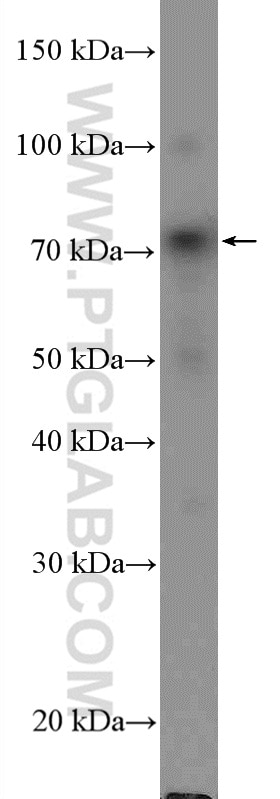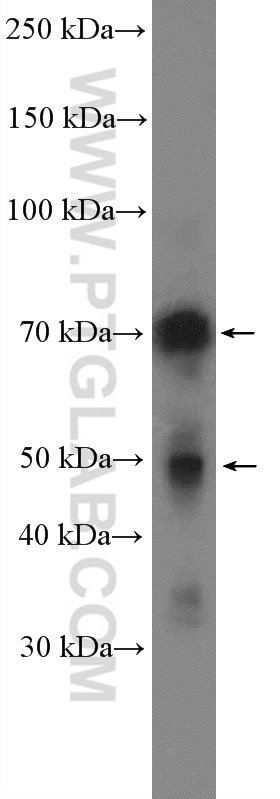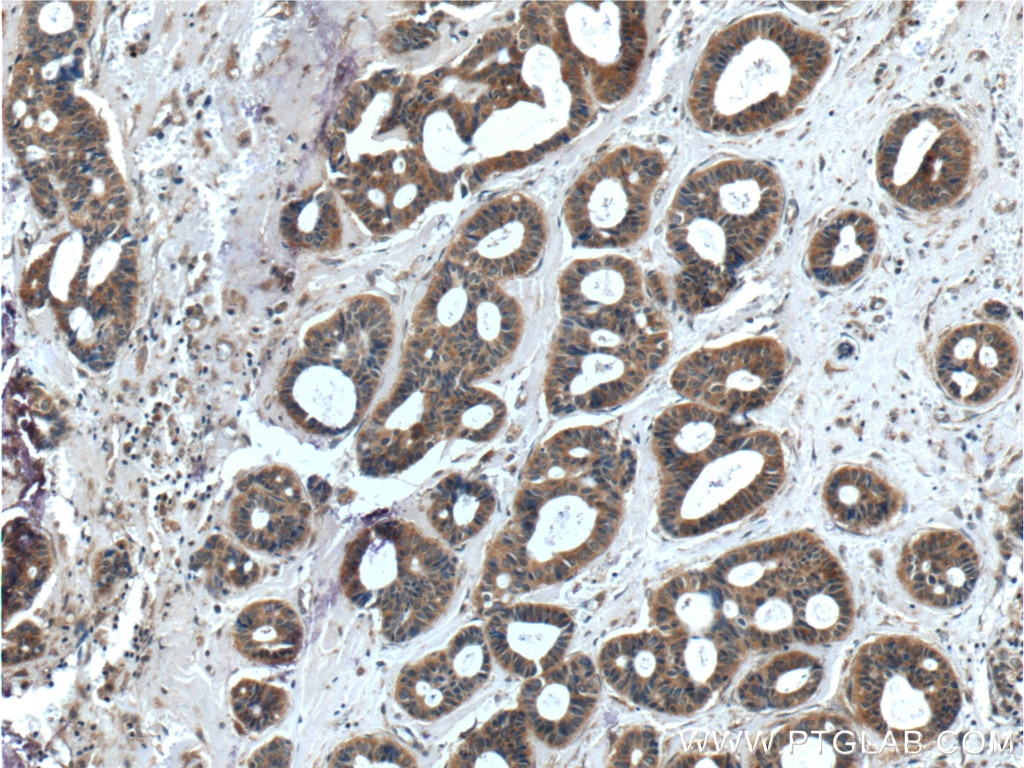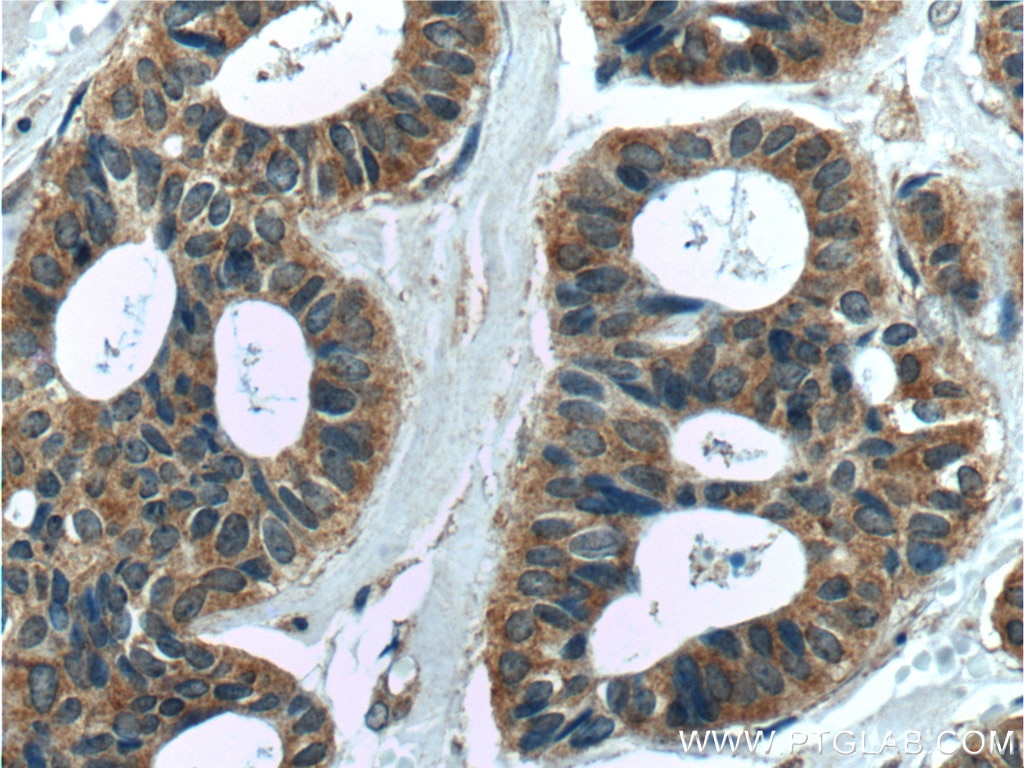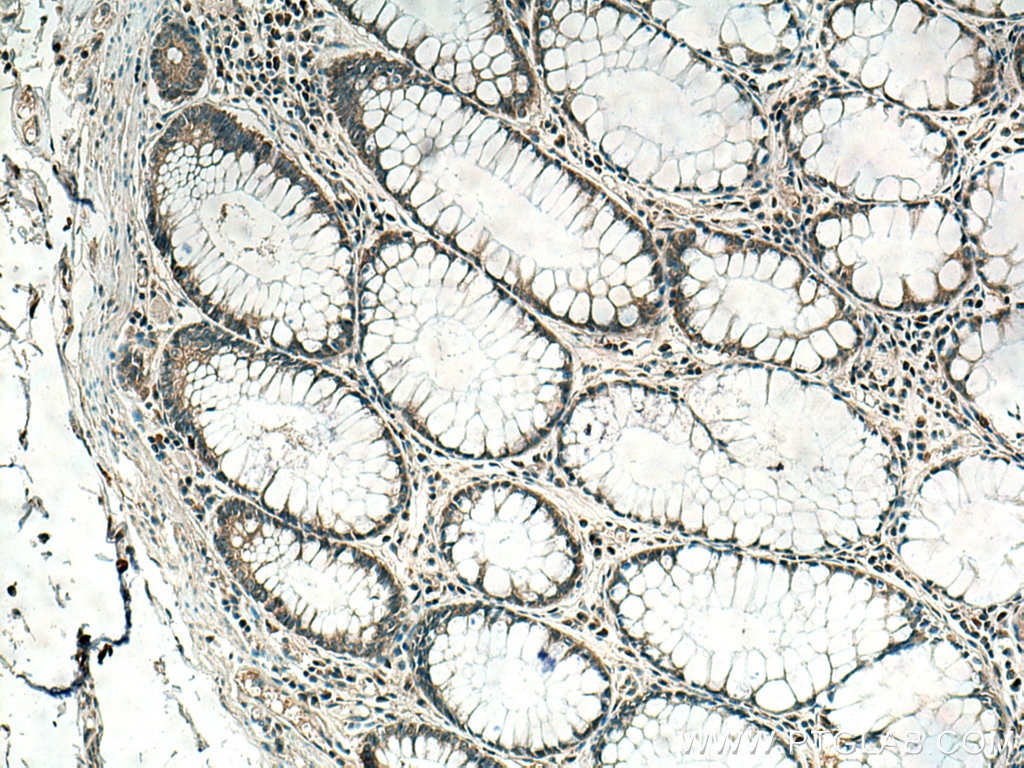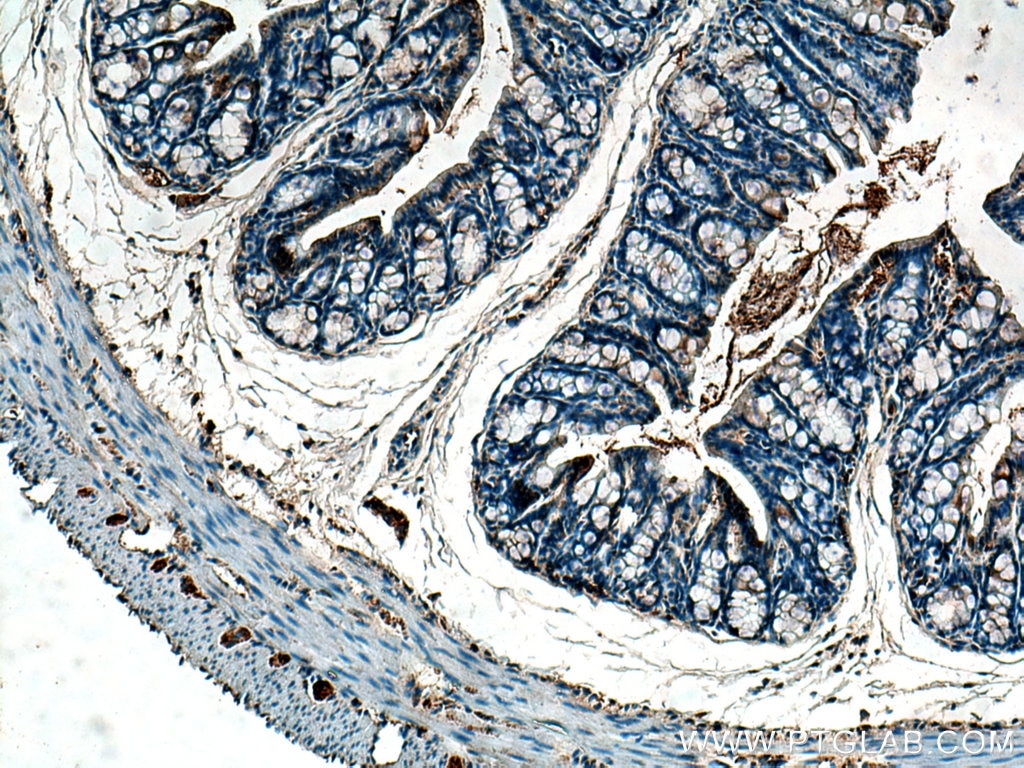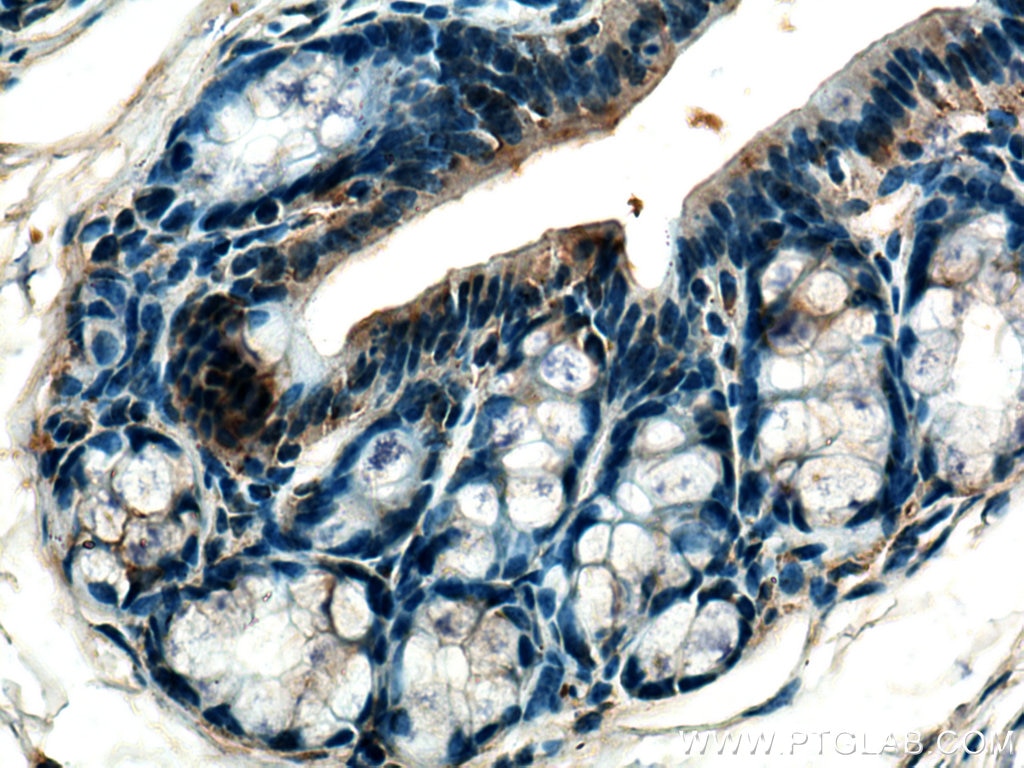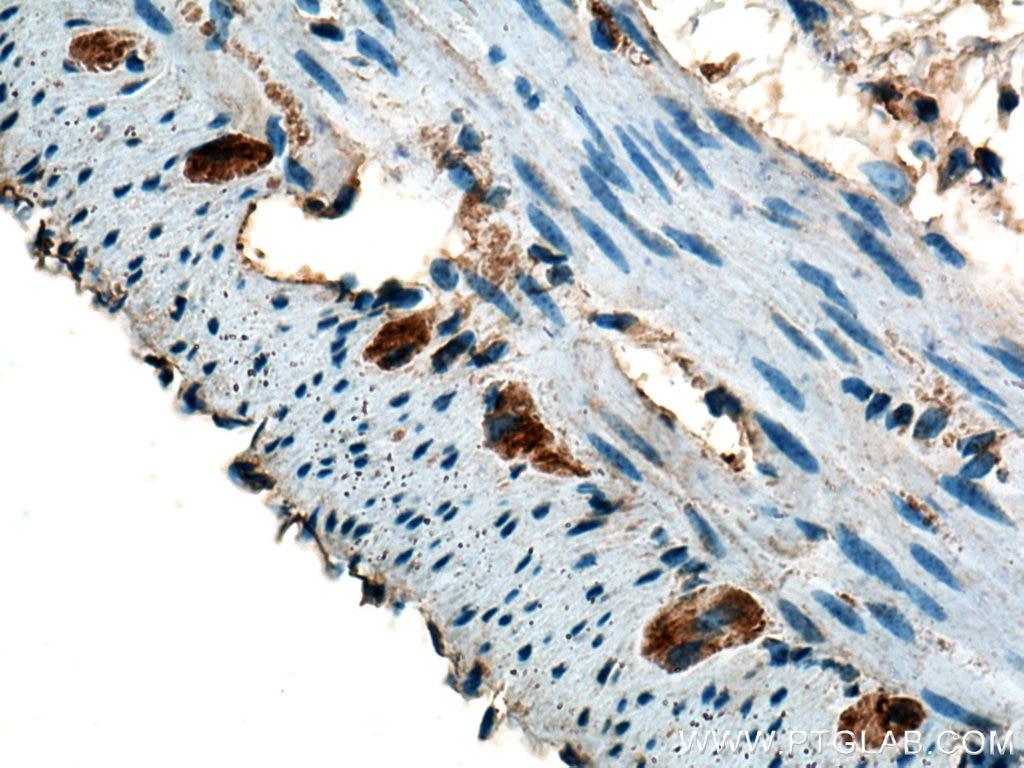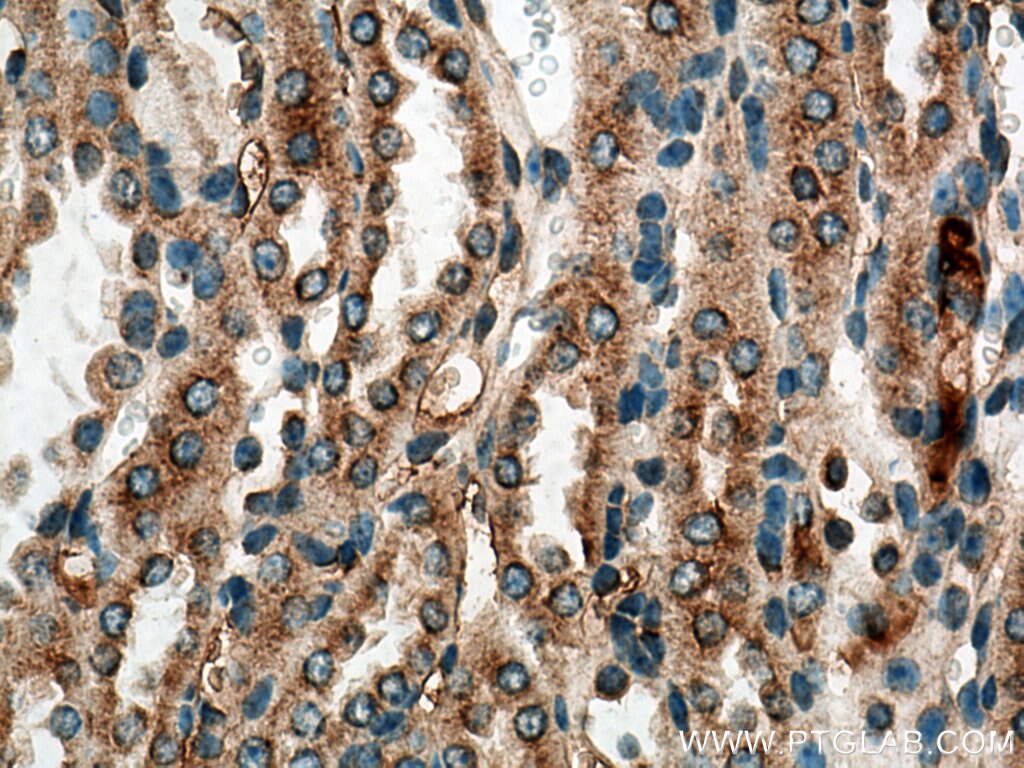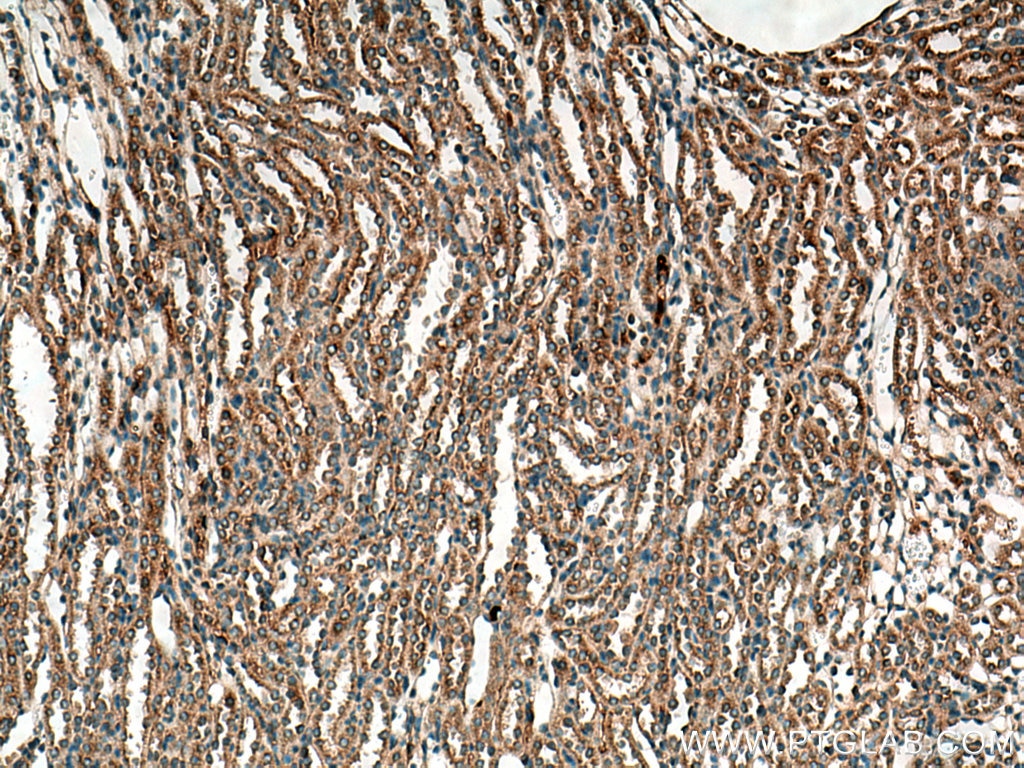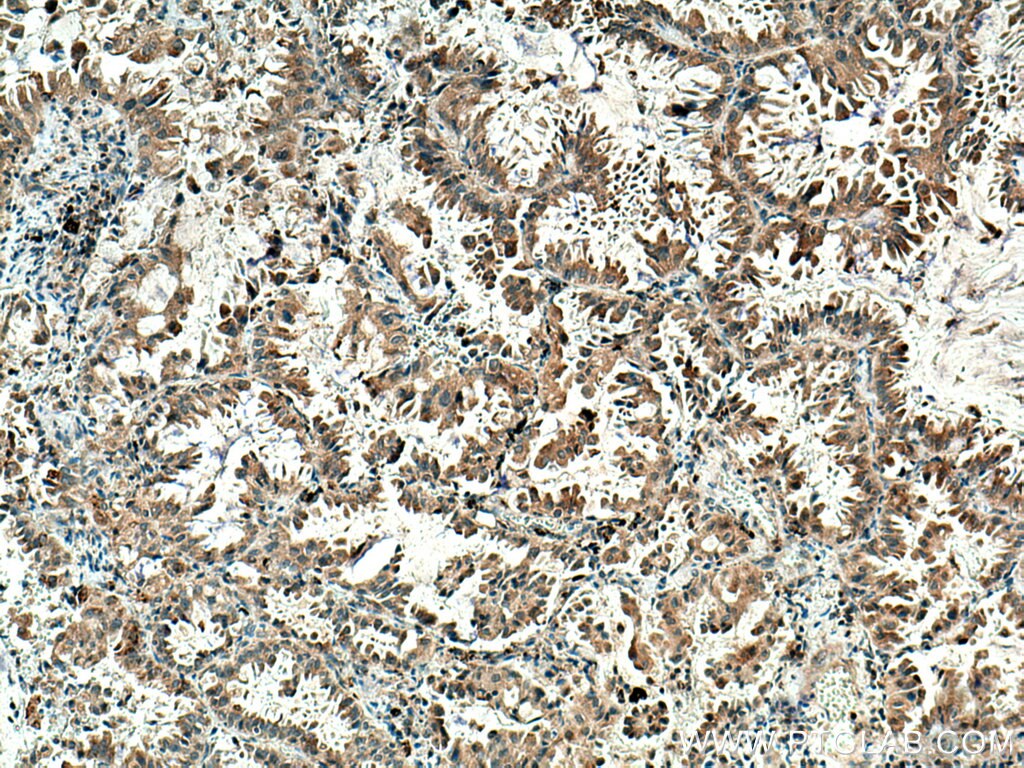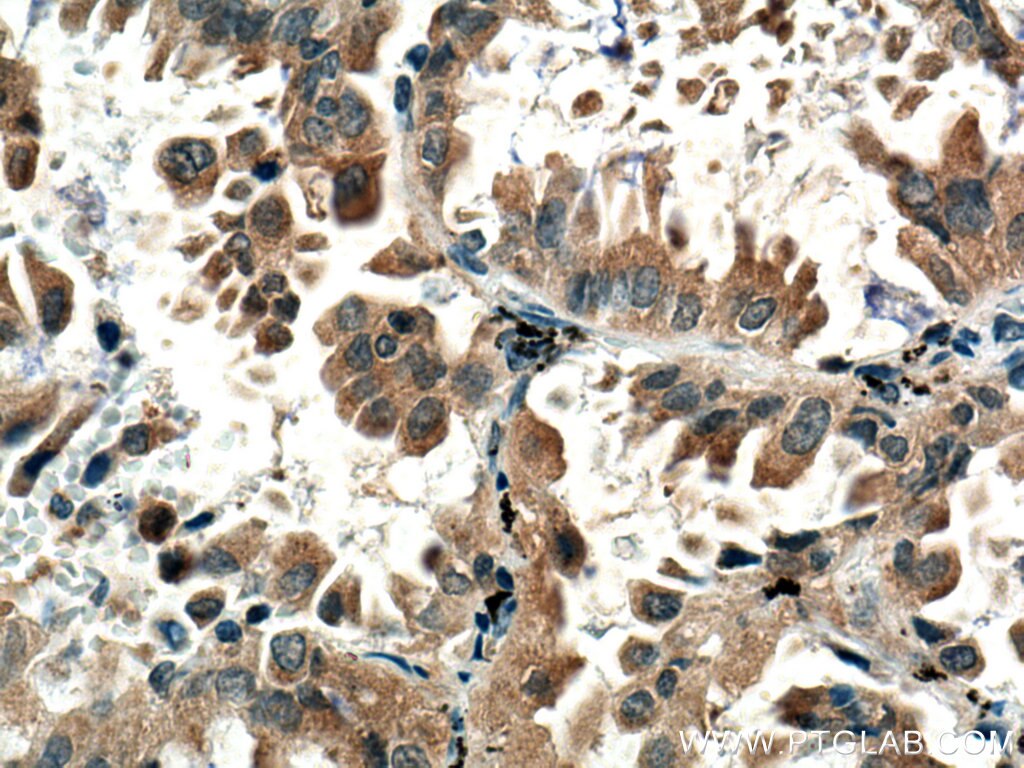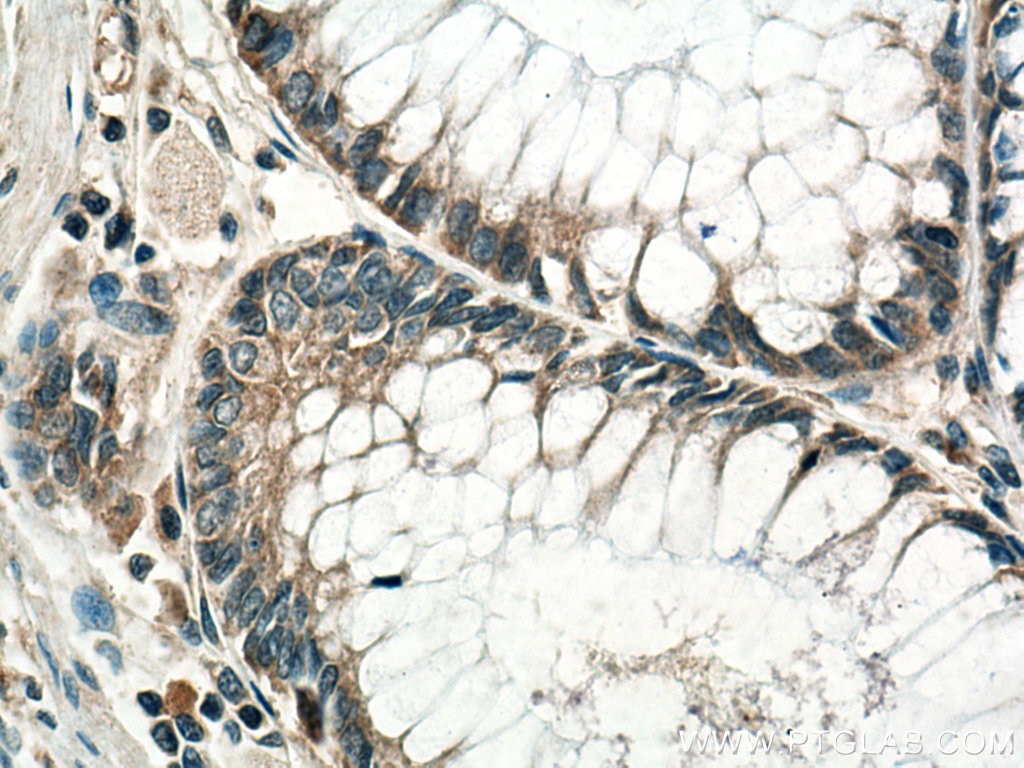MELK Polyklonaler Antikörper
MELK Polyklonal Antikörper für WB, IHC, ELISA
Wirt / Isotyp
Kaninchen / IgG
Getestete Reaktivität
human, Maus
Anwendung
WB, IF, IHC, CoIP, ELISA
Konjugation
Unkonjugiert
Kat-Nr. : 11403-1-AP
Synonyme
Galerie der Validierungsdaten
Geprüfte Anwendungen
| Erfolgreiche Detektion in WB | Jurkat-Zellen, HeLa-Zellen, K-562-Zellen |
| Erfolgreiche Detektion in IHC | humanes Mammakarzinomgewebe, humanes Kolonkarzinomgewebe, humanes Lungenkarzinomgewebe, Maus-Kolongewebe, Mausnierengewebe Hinweis: Antigendemaskierung mit TE-Puffer pH 9,0 empfohlen. (*) Wahlweise kann die Antigendemaskierung auch mit Citratpuffer pH 6,0 erfolgen. |
Empfohlene Verdünnung
| Anwendung | Verdünnung |
|---|---|
| Western Blot (WB) | WB : 1:500-1:1000 |
| Immunhistochemie (IHC) | IHC : 1:50-1:500 |
| It is recommended that this reagent should be titrated in each testing system to obtain optimal results. | |
| Sample-dependent, check data in validation data gallery | |
Veröffentlichte Anwendungen
| WB | See 2 publications below |
| IHC | See 4 publications below |
| IF | See 1 publications below |
| CoIP | See 1 publications below |
Produktinformation
11403-1-AP bindet in WB, IF, IHC, CoIP, ELISA MELK und zeigt Reaktivität mit human, Maus
| Getestete Reaktivität | human, Maus |
| In Publikationen genannte Reaktivität | human |
| Wirt / Isotyp | Kaninchen / IgG |
| Klonalität | Polyklonal |
| Typ | Antikörper |
| Immunogen | MELK fusion protein Ag1897 |
| Vollständiger Name | maternal embryonic leucine zipper kinase |
| Berechnetes Molekulargewicht | 651 aa, 75 kDa |
| Beobachtetes Molekulargewicht | 50-70 kDa |
| GenBank-Zugangsnummer | BC014039 |
| Gene symbol | MELK |
| Gene ID (NCBI) | 9833 |
| Konjugation | Unkonjugiert |
| Form | Liquid |
| Reinigungsmethode | Antigen-Affinitätsreinigung |
| Lagerungspuffer | PBS mit 0.02% Natriumazid und 50% Glycerin pH 7.3. |
| Lagerungsbedingungen | Bei -20°C lagern. Nach dem Versand ein Jahr lang stabil Aliquotieren ist bei -20oC Lagerung nicht notwendig. 20ul Größen enthalten 0,1% BSA. |
Hintergrundinformationen
MELK is involved in various processes such as cell cycle regulation, self-renewal of stem cells, apoptosis and splicing regulation. It also plays a key role in cell proliferation and carcinogenesis, and it is required for proliferation of embryonic and postnatal multipotent neural progenitors.
Protokolle
| Produktspezifische Protokolle | |
|---|---|
| WB protocol for MELK antibody 11403-1-AP | Protokoll herunterladen |
| IHC protocol for MELK antibody 11403-1-AP | Protokoll herunterladen |
| Standard-Protokolle | |
|---|---|
| Klicken Sie hier, um unsere Standardprotokolle anzuzeigen |
Publikationen
| Species | Application | Title |
|---|---|---|
Int J Oncol MELK predicts poor prognosis and promotes metastasis in esophageal squamous cell carcinoma via activating the NF‑κB pathway. | ||
Med Sci Monit Up-Regulated Maternal Embryonic Leucine Zipper Kinase Predicts Poor Prognosis of Hepatocellular Carcinoma Patients in a Chinese Han Population. | ||
Drug Des Devel Ther A Novel Tetramethylpyrazine Chalcone Hybrid- HCTMPPK, as a Potential Anti-Lung Cancer Agent by Downregulating MELK | ||
J Cancer Identification and validation of a novel apoptosis-related prognostic risk score model for lung adenocarcinoma |
